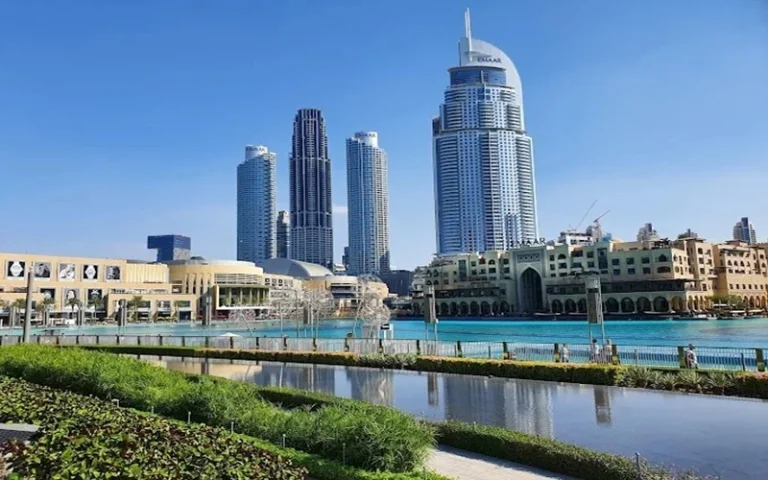Towering at 828 meters with 163 stories, the Burj Khalifa is an emblem of modern ambition—drawing tourists by the millions, featured in blockbusters like Mission: Impossible, and often topping the wish lists of global real estate investors. Yet amid its sweeping panoramas and luxurious interiors, a question often surfaces: Who is the Burj Khalifa owner? Is it the ruler’s private estate, a sovereign-backed company, or a group of international stakeholders?
Despite common misconceptions, the building is not privately owned by royalty. Instead, ownership resides with Emaar Properties, a Dubai-based real estate giant led by Mohamed Alabbar, and supported by the strategic will of Dubai’s leadership. Let’s unravel the story behind its ownership, founding vision, economic model, and global impact.
🏛️ The Burj Khalifa Owner: Emaar Properties & Mohamed Alabbar
Emaar Properties: Primary Owner
The Burj Khalifa owner is Emaar Properties PJSC, publicly listed on the Dubai Financial Market. As the developer, manager, and asset holder, Emaar oversees all functions—from architectural design and residential sales to observation decks, hotels, and ongoing maintenance.
Mohamed Alabbar: Visionary Founder and Chairman
Mohamed Ali Alabbar, born in 1956 in Dubai, founded Emaar in 1997. With a background in finance and close ties to Dubai’s leadership, Alabbar has guided Emaar’s evolution from residential projects to global landmarks. Beyond Burj Khalifa, he launched ventures like Noon.com, Eagle Hills, and Americana Group, expanding his footprint across real estate and e-commerce.
| Topic | Insight |
|---|---|
| Burj Khalifa owner | Emaar Properties (developer, operator) |
| Founder & Chairman | Mohamed Alabbar |
| Construction timeline | 2004–2009; opened Jan 4, 2010 |
| Architecture | Designed by Adrian Smith; built by Samsung C&T, BESIX, Arabtec |
| Mixed-use model | Residences, offices, Armani Hotel, decks, retail |
| Financial impact | 10% ROI target; tourism and real estate driver |
| Global imprint | Catalyst for Emaar’s international expansion |
🏗️ Origins: Vision for the World’s Tallest Tower
Emaar’s Ambitious Beginning
Since its founding, Emaar sought to redefine Dubai’s skyline through upscale developments. The Burj Khalifa emerged from this ambition as the centerpiece of Downtown Dubai, designed to position the city on the global stage.
A Political and Economic Catalyst
Dubai’s ruler, Sheikh Mohammed bin Rashid Al Maktoum, supported the project as a symbolic leap from oil to tourism and services. The building—initially named Burj Dubai—was renamed in honor of Sheikh Khalifa bin Zayed Al Nahyan from Abu Dhabi, who extended critical financial support during the 2008 crisis.
🏢 Architectural Design & Developer Collaboration
World-Class Design
The design by Adrian Smith of Skidmore, Owings & Merrill features a Y-shaped floor plan for structural strength and elegance. The tower holds multiple records—highest occupied floor, tallest service elevator, and tallest freestanding structure.
Construction Consortium
Construction (2004–2009) leveraged global expertise: South Korea’s Samsung C&T, Belgium’s BESIX, and local Emirati contractor Arabtec executed the massive build.
💼 Business Model & Revenue Strategy
Mixed-Use Model
Burj Khalifa is more than a tower—it’s a mixed-use icon combining:
-
900+ private residences
-
Corporate offices
-
The Armani Hotel (a collaboration with Giorgio Armani)
-
World-class observation decks (“At the Top” levels 124–148)
-
Retail units and F&B outlets
Revenue Streams & Economic Performance
In 2010, Emaar projected the tower would generate around 10% ROI. Revenue pillars include:
-
Residential and commercial sales
-
Observation deck ticketing and guided tours
-
Hotel room bookings at Armani Hotel
-
Retail and lease rentals in the Downtown complex
By Q2 2012, Emaar’s profit surged 45%, fueled by assets like Burj Khalifa and Dubai Mall—together part of a $20 billion Downtown Dubai masterplan.
📣 Marketing, Tourism & Global Branding
A Symbol of Dubai’s Ambition
Positioned for global appeal, the tower hosts major events—like New Year’s LED shows and fireworks—garnering international media attention.
Cultural Integration
From cinematic cameos (Mission: Impossible, Independence Day) to branding collaborations (e.g., Armani Hotel), each initiative reinforced the structure’s prestige.
🌍 Expansion Strategy & Market Reach
Downtown Dubai Ecosystem
Burj Khalifa anchors a 490‑acre development—encompassing Dubai Mall, Dubai Fountain, Burj Park, and residential/service towers—creating a comprehensive destination.
Global Influence
The success of Burj Khalifa facilitated Emaar’s entry into international markets: Egypt, Saudi Arabia, USA, Turkey, and beyond. Its landmark projects shaped global urban development strategies.
🧩 Owner’s Influence on Growth & Policy
Government Alignment
Since sovereignty laws dictate land ownership, Emaar operates within Dubai’s regulatory framework. Sheikh Mohammed enabled foreign real estate investment since 2002, which fueled demand for Downtown assets.
Alabbar’s Leadership & Vision
Mohamed Alabbar’s innovative mindset shifted the brand from residential concepts to global real estate dominance. His dual focus on luxury and cultural relevance shaped the project’s identity.
📈 Financial & Tourism Impact
-
Skyrocketing Visitor Numbers
Millions visit annually via ticketed observatories and hotel stays. -
Economic Leverage
Boosting Emaar’s profits and regional property values—Downtown Dubai became one of the most lucrative zip codes globally. -
Tourism Magnet
Tourists flock to nearby attractions including Dubai Mall and the Dubai Fountain shows—strengthening Dubai’s global allure. -
Global Precedent
Burj Khalifa set a high benchmark for mega-architecture, inspiring similar skyscraper ambitions worldwide.
📝 Conclusion: Understanding the Burj Khalifa Owner
So—who is the real Burj Khalifa owner? Built and managed by Emaar Properties and guided by Mohamed Alabbar, the tower stands as a monumental achievement under Dubai’s long-term development objectives. A joint effort between private enterprise and state leadership, it exemplifies visionary investment, engineering prowess, and global ambition.
As it continues to define skylines, attract visitors, and drive economic value, Burj Khalifa remains a testament to effective ownership, innovative thinking, and architectural excellence.
Related Article –
Red Lobster’s Comeback Odyssey — Who’s the Real “Red Lobster New Owner”?
